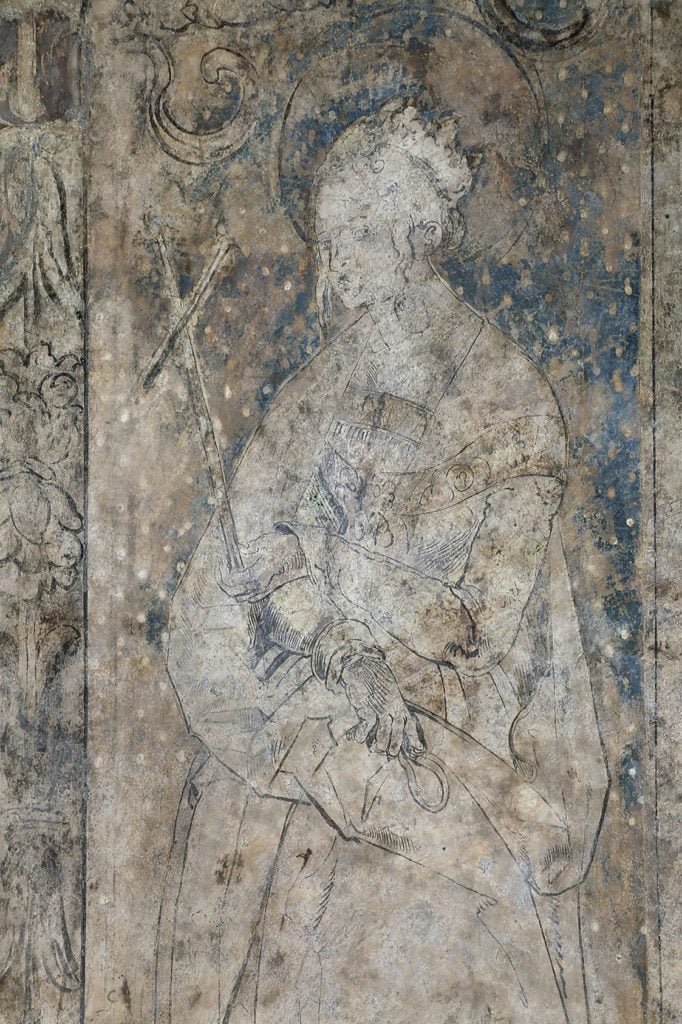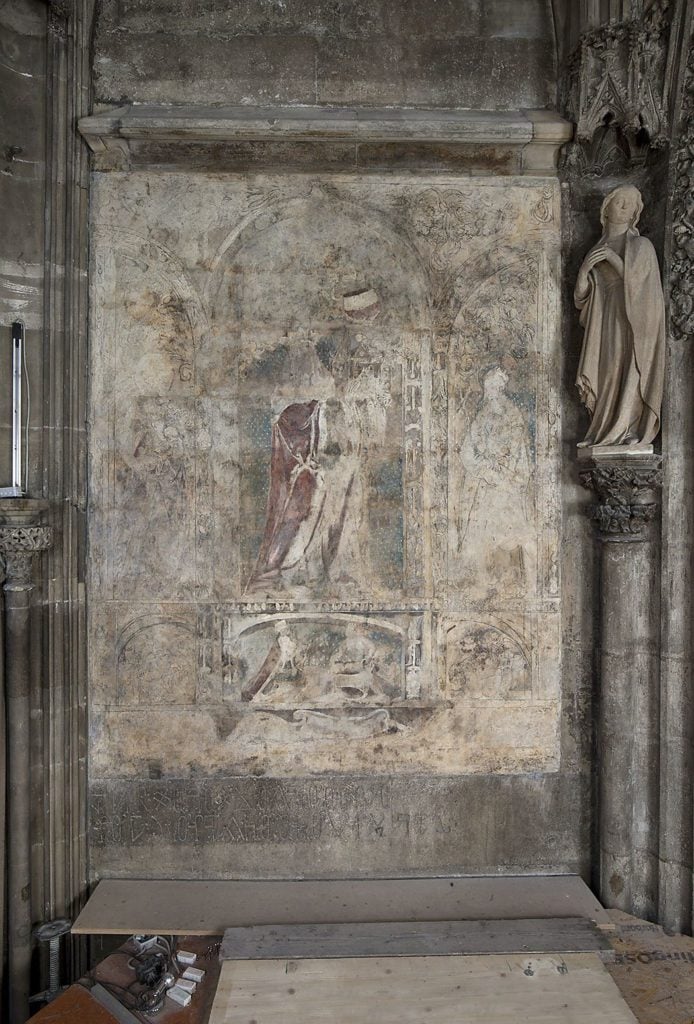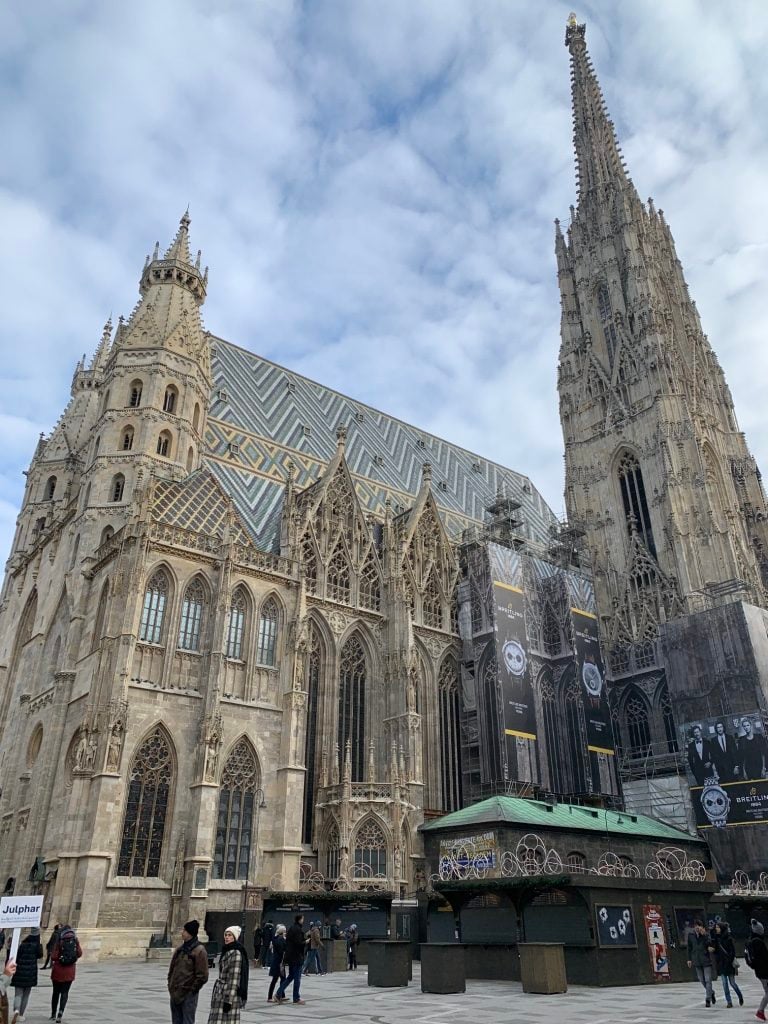Art World
Astounded Scholars Just Found What Appears to Be a Previously Unknown Work by Albrecht Dürer in a Church’s Gift Shop
The stunning discovery was made in Vienna—a city Dürer is not known ever to have visited.

The stunning discovery was made in Vienna—a city Dürer is not known ever to have visited.

Sarah Cascone

Experts in Vienna have discovered an artwork in a local cathedral that may bear the hand of the Renaissance master Albrecht Dürer.
Scholars believe a newly discovered wall painting in Stephansdom, the city’s St. Stephen’s Cathedral, features an underdrawing that was sketched by the famed German painter and printmaker. If so, it hints at a previously unknown chapter in the life of the artist, who is not known to have ever visited Vienna.
Hidden beneath dirt that had accumulated over the centuries, the painting was found during restoration work on the Gothic cathedral, which was built between 1137 and 1160.
In November, a few weeks after the artwork was uncovered above the doorway of the bishop’s portal—an area of the church that now serves as a gift shop—the archdiocese called a meeting of researchers and scientists to determine its origin.
The consensus was that the painting were almost certainly the work of Dürer, or at the very least his studio or workshop. Only one other set of wall paintings by the artist is known to exist. “The quality of the underdrawing is reminiscent of Dürer,” said Bernd Euler-Rolle, the director of Austria’s Federal Monuments Office, according to Kronen Zeitung.

This painting was recently discovered in the giftshop at St. Stephen’s Cathedral. The underdrawings of the two side panels are likely the work of Albrecht Dürer. Photo © Dombauhütte zu St Stephan.
One expert went even further.
“It is not a question of whether, but when Dürer was in Vienna,” Erwin Pokorny, an expert on the artist, told Viennese daily Die Presse. “The masterful strokes are clearly recognizable as those of Dürer.”
Believed to date from around 1505, the underdrawing was done on plaster. The painting atop it is a triptych featuring Austrian patron St. Leopold in the center with Saints Catherine and Margaret on the left and right panels, respectively.
Dürer is believed to have drafted the drawings for the two female saints, but not to have done the finished painting. If so, it is unclear why he didn’t complete the work himself.
One theory is that the mural was commissioned by the Holy Roman Emperor Maximilian I, who is known to have employed Dürer from around 1512. It is possible, however, that their relationship was formed earlier.

St. Stephen’s Cathedral, Vienna’s Stephansdom. Photo by Sarah Cascone.
The Baroque art historian Joachim von Sandrart wrote in his biography of the artist that the emperor asked Dürer to make a significant wall painting, but there are no other records of that work. This could be it, art historian Micahel Rainer told Die Presse.
Dürer may have stopped in Vienna to visit his friend, Conrad Celtis, a humanist scholar who lived in the city from 1497 to 1508, the Art Newspaper speculates. It may have been a stop on his way from Nuremberg to Venice in 1505, a theory bolstered by a known Dürer drawing in the British Museum collection done in Windisch, in southern Austria, which is along the route.
The cathedral has now begun an extensive conservation project, cleaning the work and taking small samples for chemical analysis. The full findings are set to be published in an Austrian art and preservation magazine.
It remains to be seen how upcoming exhibitions, such as “Dürer’s Journeys: Travels of a Renaissance Artist,” which will appear at the National Gallery in London (February 13–May 16, 2021), will address the possibility that the artist made his way to Vienna. Currently, the show plans to cover Dürer’s time in the Alps, Italy (particularly Venice), and the Netherlands.
The museum declined to comment on the new discovery.